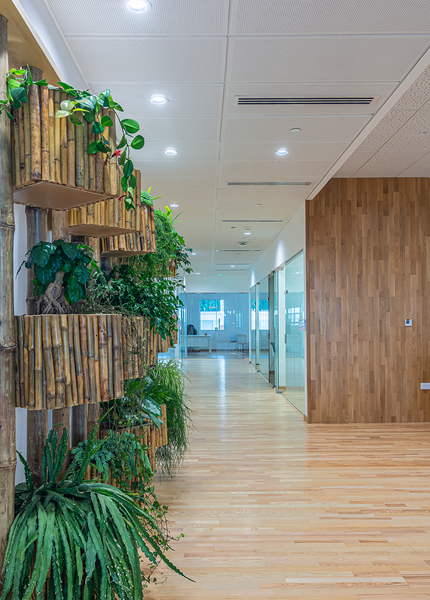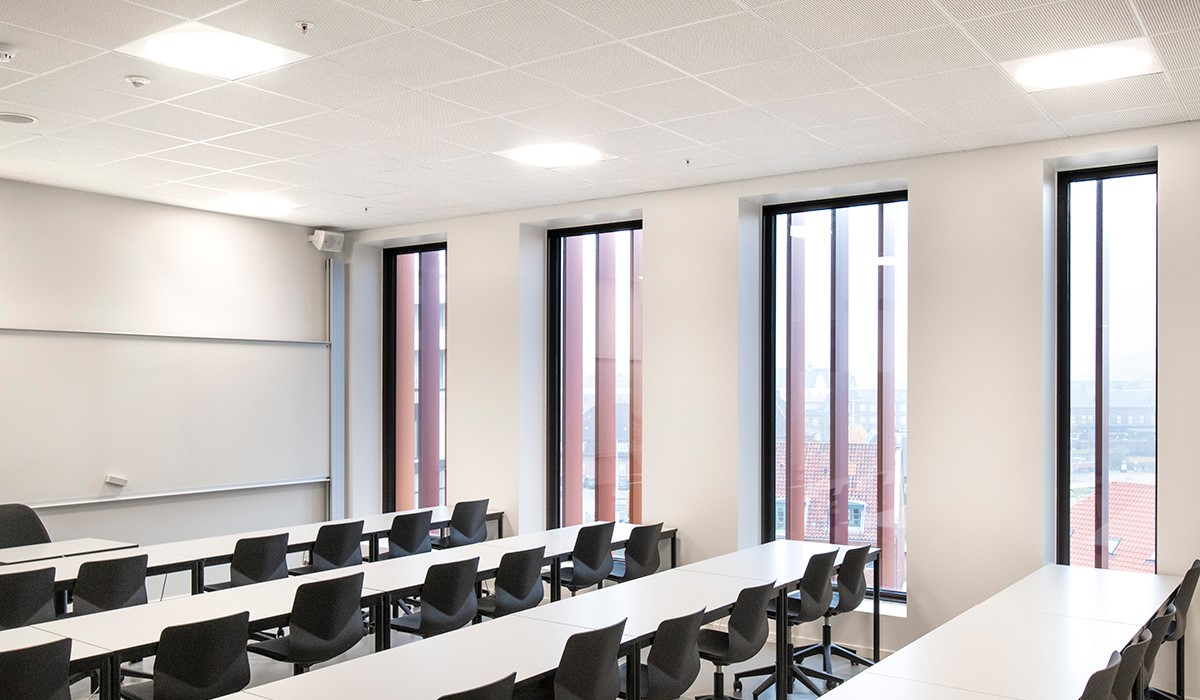By combining our acoustic ceilings with a ventilation system, you can create the perfect indoor climate with a ‘ventilation ceiling’. A ventilation ceiling can save up to 50cm in construction height per floor. It can also be cheaper than a separate ventilation system, as no inlet vents are required. Compared to traditional ventilation, a ventilation ceiling enables you to deliver a more consistent airflow over the entire ceiling surface, while avoiding drafts.

Ventilation & acoustics
Because we spend most of our time inside – up to 90%, on average – the quality and comfort of our indoor environment makes a big difference not only to how we feel, but also to how we perform.

What is good air quality?
The best way to get fresh air is to go outside. But for most of us, our way of living and working often makes it difficult to get outside as much as we’d like – or as much as we should. So if we can’t get fresh air outside, what can we do? The answer is to bring the fresh air inside, by ensuring the buildings we spend our time in are designed with healthy, natural materials, with excellent ventilation properties and low emissions, so we benefit from a consistent, comfortable fresh air flow even when we’re indoors.

10% improvement in learning
Research into the indoor air quality at Danish elementary schools revealed that students’ learning ability could increase by 10% if the indoor air was improved to the level of office buildings. Calculations showed that this could boost Danish GDP by up to €170 million – simply by improving the air quality in schools.
How do ventilation ceilings work?
A ventilation ceiling is simply an acoustic ceiling that lets fresh air pass through without using inlet vents. The clever part is in the cavity above the ceiling: instead of traditional air inlets, the whole cavity is one big inlet channel.
This is how it works:
- Supercooled air is blown into the ceiling cavity
- The acoustic felt creates differential pressure that ensures even distribution of the air across the entire ceiling surface
- The cool air descends evenly through the ceiling perforations across the ceiling surface
- The air then slowly circulates back towards the outlet in the ceiling


3 top benefits of a ventilation ceiling
- Comfort - no draughts and no noise from ventilation systems
- Complete freedom for interior design - no areas with the risk of draughts
- Healthy indoor climate - gypsum is a natural material, with low emissions
Products recommeded for ventilation ceilings

Acoustical tile in concealed T-grid. Monolithic & fully demountable ceiling surface.

Acoustic lay-in tile in recessed T-grid. Elegant design and easy installation.

Acoustical lay-in tile in exposed T-grid. Superb acoustics. Exceptional robustness. Unique look.




